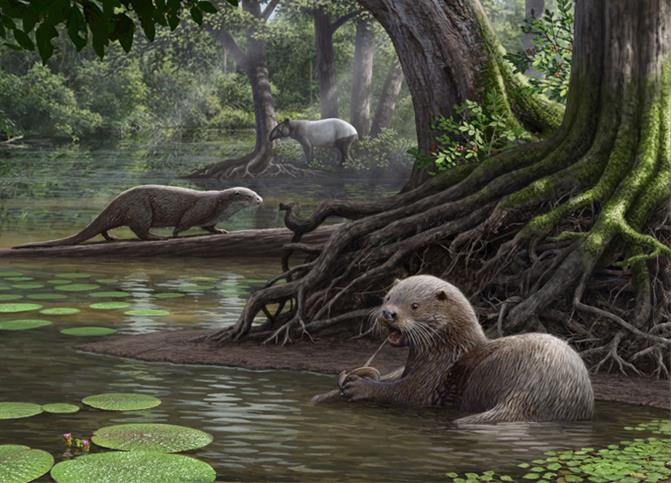A monster otter that roamed Earth six million years ago has been discovered in China
Huge species was as big as a wolf and is thought to be the largest otter to have ever lived.
A giant species of otter that lived over six million years ago has been discovered in the Yunnan Province in China. The creature, Siamogale melilutra, is believed to be the biggest otter species ever to have lived, weighing in at 110lbs and being about the same size as a modern wolf.
The fossil was discovered by palaeontologists from the Cleveland Museum of Natural History and the Natural History Museum of Los Angeles County. The partial skeletons of three individuals were unearthed in the latest Miocene lignite beds of Shuitangba, including a near-complete cranium and mandible. Analyses of the fossils have been published in The Journal of Systematic Paleontology.
Researchers carried out CT scans of the skull to create a restoration of the species. "While the cranium is incredibly complete, it was flattened during the fossilisation process. The bones were so delicate that we could not physically restore the cranium. Instead, we CT-scanned the specimen and virtually reconstructed it in a computer," explained study co-author Denise Su.

Their findings showed the species had a head similar to an otter or badger, while its teeth were more badger-like. Further analysis showed it would have had a large and powerful jaw and rounded teeth found in other otter lineages.
Scientists showed Siamogale melilutra belongs to an ancient lineage of extinct otters only previously known from teeth recovered in Thailand. This raised the question of how species evolve – did all otters come from a single ancestor or was it a case of convergent evolution, where the same traits developed from adaptions to similar environments? The research team found these rounded-cusped teeth appeared at least three times independently over the evolutionary history of otters, indicating a case of convergent evolution.
Researchers will now continue to study the extinct species to understand its place in otter history: "Why did this species grow so large?" Su queries. "How did its size affect its movement on land and in water? And most importantly, what types of advantages did its size give?"

© Copyright IBTimes 2025. All rights reserved.






















